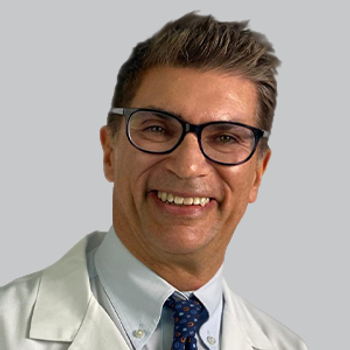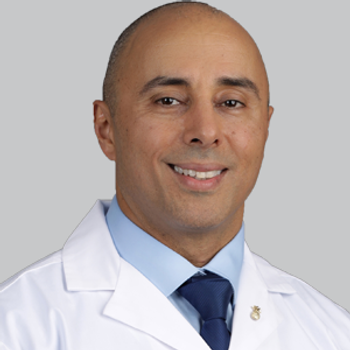
Post Hoc Analyses Shed Light on Safety and Efficacy of Once-Nightly Sodium Oxybate in Narcolepsy Care
Richard Bogan, MD, FCCP, FAASM, an associate clinical professor at the University of South Carolina School of Medicine, discussed a bevy of presentations from the 2025 SLEEP Annual Meeting highlighting the effects of once-nightly sodium oxybate.
Once nightly sodium oxybate (Lumyrz; Avadel Pharmaceuticals) was approved by the FDA in May 2023 for the treatment of cataplexy or excessive daytime sleepiness in adults with narcolepsy. The approval marked a key advancement by offering a single-dose, extended-release formulation compared with the previously required twice-nightly dosing.
At the SLEEP 2025 Annual Meeting, held June 8–11 in Seattle, Washington, Richard K. Bogan, MD, FCCP, FAASM, pulmonary and sleep specialist at Bogan Sleep Consultants and associate faculty at the Medical University of South Carolina, presented several post hoc analyses on once-nightly sodium oxybate. Of them included an analysis on the effects of the therapy on apnea-hypopnea index, as well as a newly introduced observational study testing the drug’s real-world efficacy.
The event, jointly hosted by the American Academy of Sleep Medicine (AASM) and the Sleep Research Society (SRS), featured sessions addressing key advancements in sleep disorder therapeutics. Following the presentations, Bogan sat down with NeurologyLive® to highlight some of the biggest takeaways from these post hoc analyses, including the focus on patients with mild obstructive sleep apnea and narcolepsy. In the interview, he emphasized the importance of evaluating safety signals in patients with sleep apnea and discussed the broader clinical implications of the REFRESH study and related subgroup analyses in patients.
NeurologyLive: Can you give an overview of the recent post hoc analysis related to once-nightly sodium oxybate and the key clinical takeaways?
Richard Bogan, MD, FCCP, FAASM: We all know oxybate is very effective in treating patients with narcolepsy. It treats both cataplexy and excessive daytime sleepiness. Sodium oxybate’s been around since 2002, but now we have a new formulation that’s once-nightly. In the pivotal trial data, when we put people on once-nightly at 4.5, 6, and then titrated up to 9 grams, we saw a signal.
So, the question is, how safe is it? Particularly, since it makes you sleepy, could it make sleep apnea worse? We looked at patients who had evidence of obstructive sleep apnea, as measured by the apnea-hypopnea index (AHI). Now obviously, patients with significant, clinically relevant sleep apnea were excluded. They had to have an AHI of less than 15 to be in the study.
But we farmed the data to say, what is the AHI in these people, and does this molecule make it worse? These were mild, low numbers—right around the 2 to 3 AHI range. Importantly, when you put the individuals (and it's placebo-controlled, parallel design) on this oxybate molecule—and again, they ended up looking at 6 grams, which is effective (4.5 is not), so 6, 7.5, and 9 grams, there was no increase in the apnea-hypopnea index. And the safety profile was pretty much what we've seen with the oxybate molecule: headache, dizzy, nausea, some rare bedwetting and that sort of thing.
Were there any adverse event signals in the subgroup?
In the adverse event profile, one patient at a certain dose said they had a little snoring. There are always differences. One patient had sort of an event where they thought they might have been holding their breath. We always tell our patients this is a sedative medication. It could worsen sleep apnea or change the arousal index, but we didn’t see that in the trial. So that’s very interesting and encouraging.
Now that this drug has been approved for a little over two years, what have we learned in terms of its use? Are there any new insights?
I mean, there’s no substitute for clinical experience, obviously, but there’s also no substitute for learned, specific, controlled evaluation. The REFRESH study was actually taking patients who wished to convert from twice-nightly to once-nightly. So, it's not a comparative study, per se, but we're just looking for a signal. And the signal did show that patients still had improvement in their excessive sleepiness after switching. Obviously, oxybate works—it's very useful—and the once-nightly works as well. It reduces excessive sleepiness.
We had patients who had normalized their Epworth scores coming from sleepy scores as high as 18 or so, down to less than 10, which was encouraging. I’ll throw in, parenthetically, we also did a post hoc analysis in patients who were most severe. So, we took that group and looked at the worst third based on the Maintenance Wakefulness Test (MWT), how sleepy were they? These people had MWTs of 1.5 minutes. That means when you turn the lights out and tell them to try to stay awake, they fall asleep in 1.5 minutes. They’re profoundly sleepy.
And then we also picked out the worst Epworth scores, the other tertile. Those individuals had Epworth scores of 20 out of 24. I mean, they were profoundly sleepy. And we looked at that, and the important thing is, these are the worst of the worst. We saw a signal. The MWT and Epworth score improved. That’s another post hoc analysis being presented here, which I think is very relevant and important.
Can you explain the REFRESH study and what it aimed to achieve?
As I said, oxybate is effective in treating sleepiness and cataplexy, and, in the pivotal REST-ON trial, about 80% of the patients had type 1 narcolepsy, meaning they had cataplexy as well.
So, when you take those individuals and transition them over, the question is: is the drug going to work or not? Some of these patients didn’t want to take twice-nightly oxybate. With the once-nightly formulation, the question was: could we see a signal? I think that’s the purpose of the study—is it effective in individuals who are transitioning over? And as I said, we did see a signal. It improved the Epworth score, they were less sleepy.
As an experienced clinical trialist, what are some ways you think we can innovate clinical trials in sleep medicine?
Patients are more than an Epworth score and an MWT. Transitioning from just those parameters, they have functional impacts on quality of life, executive function, thinking, memory, mood, productivity, workplace performance. We’re paying more attention to that, both in the science and in the clinic.
The other thing is, I’m all about states and processes. I always ask people: what state is the brain in? The biological processes and science are improving in terms of understanding that. We now have a lot of work on orexin agonist and antagonists to modulate sleep-wake processes.
Humans love to be awake in the day and sleep at night. What makes that happen? Where does it go wrong? And then, how can we study and improve not only functionality, alertness and quality of wakefulness, but also the downstream effects on functionality?
What excites you most about this year’s SLEEP 2025 meeting?
We’re seeing translational science, you know, basic scientists improving our understanding, and then translating that into the clinic. Particularly with orexin, I think pretty that’s exciting. Orexin is a neuropeptide—it’s the command-and-control center for alertness, so to be able to modulate it and see outcome measures is very interesting.
Dr. Siegel’s keynote discussion was provocative and interesting, but he emphasized that the brain has redundancy in terms of stabilizing states. So, it’s not only a single neuropeptide, but it’s downstream monoaminergic amines. That’s what effects the locus coeruleus norepinephrine in terms of signaling and even breathing and hypothalamic-pituitary axis.
All of these things are really important: how do we breathe? How do we prevent or treat sleep apnea? These are exciting questions coming from basic science.
Dr. Siegel looks back at animals, and, you know, I like the hunter gatherer stuff. I mean, we still are fundamentally primal. We wake, sleep, feed ourselves, protect ourselves, reproduce, all those things are primal and programmed into us. The more we understand that the more we can understand pathology and correct it.
Transcript edited for clarity.
Newsletter
Keep your finger on the pulse of neurology—subscribe to NeurologyLive for expert interviews, new data, and breakthrough treatment updates.


































